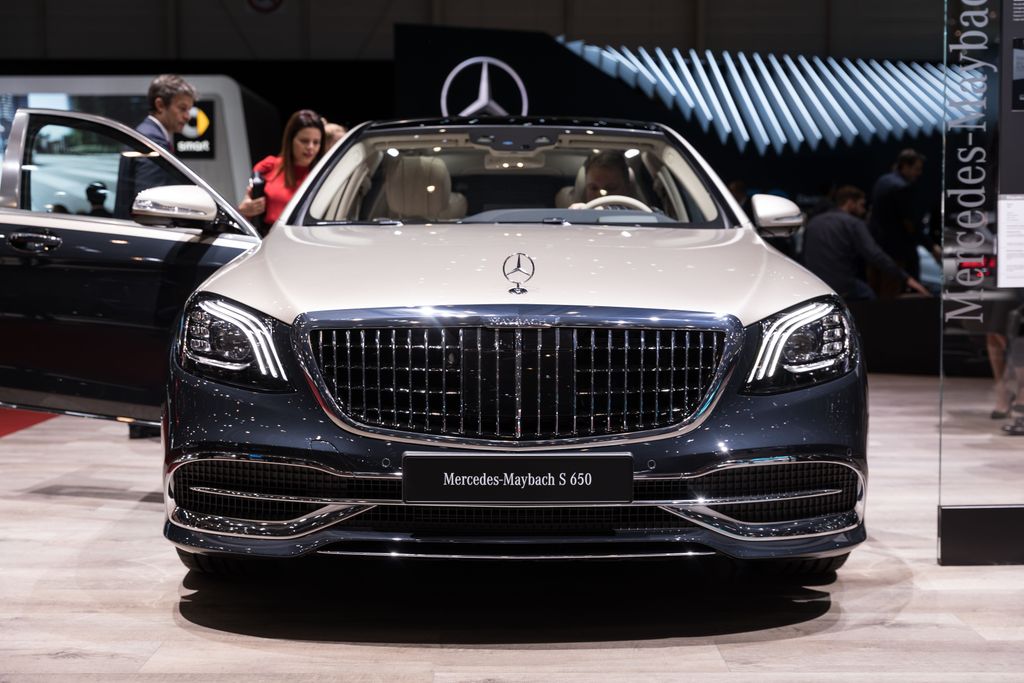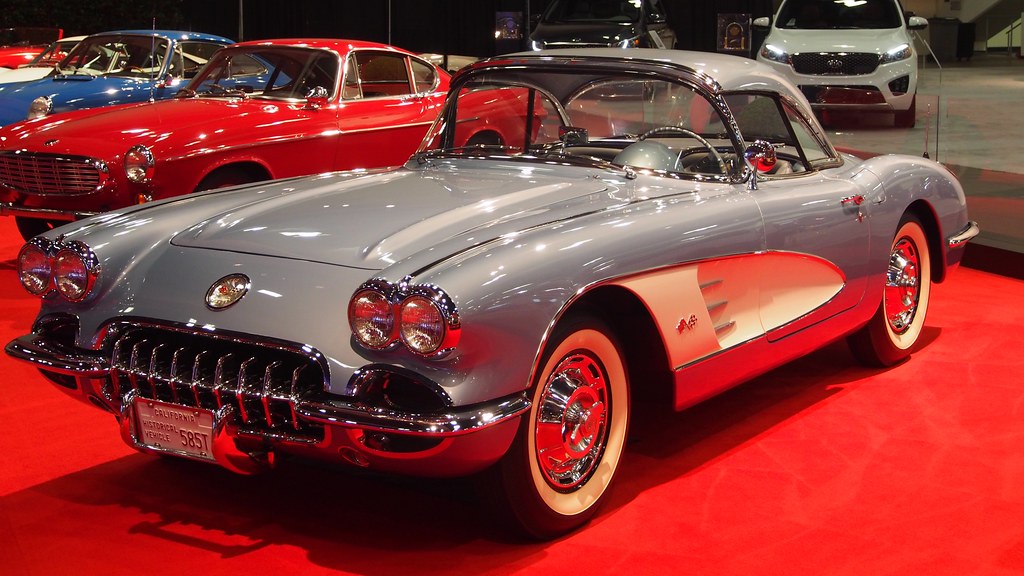
If there’s one car that’s captured imaginations, turned heads, and defined American performance since 1953, it’s the Chevrolet Corvette. Whether you dreamed of a shark-nosed C3 on your bedroom poster or remember when the Stingray first hit the streets, the Corvette has always been the car that made people say, “Someday.” It’s more than just a car; it’s a feeling, a statement, and a piece of Americana that has continually reset the standard for awesomeness among teenagers for decades, making it the subject of outlandish posters, intricate scale models and carefully crafted scotch decanters.
Across every generation, the Corvette has evolved, sometimes radically, yet it has never lost its spirit. Some models rewrote the rules. Others broke barriers in performance and design. And some simply reminded the world that raw power and undeniable style didn’t have to come from overseas. From its humble beginnings to its status as a high-performance icon, the Corvette has continually evolved while maintaining its core identity, leaving an indelible mark on automotive history and captivating enthusiasts and collectors around the world.
So, buckle up, fellow car lovers! We’re about to fire up that small-block (or big-block, depending on the era!) and take an exhilarating journey through the crème de la crème of Corvette history. We’ve scoured the archives, weighed the historical impact, and listened to the passionate roar of enthusiasts to bring you a list of 12 truly iconic classic Corvettes that are the stuff of legend. Get ready to dive deep into the models that shaped this automotive powerhouse and continue to captivate collectors and drivers around the globe.

1. **1953 Corvette C1: The Genesis of an Icon**This is where the magic all began! The original 1953 Corvette, affectionately known as the “C1,” isn’t just a car; it’s the beginning of a magnificent legacy. Debuting at the GM Motorama in New York City on January 17, 1953, it was an instant sensation, even if its mechanical bits weren’t exactly exotic. The greatness of this first Corvette lies simply in the fact that it was the very first of its species, sparking an American love affair that continues to burn brightly 70 years later.
With its sleek, fiberglass body and stylish design, the 1953 model instantly captured the imagination of car enthusiasts. This was a truly revolutionary innovation at the time, as it marked the first time fiberglass was used for a production car body. It was a two-seater that exuded confidence without looking European or fragile, standing out as a robust American offering at a time when most popular sports cars were spindly contraptions like the MG-TF.
Initially produced in extremely limited numbers – only 300 examples were hurriedly hand-built in its debut year – all painted in a distinctive Polo White with red interiors and powered by a 150-horsepower version of the Chevy “Stovebolt” inline-6 engine, mated to a two-speed automatic transmission. While early versions favored style over blistering speed, its innovative design and sheer presence laid the essential foundation for the Corvette’s future success. Today, it remains highly coveted by collectors, a tangible piece of automotive history that lit the fuse for everything that followed.

2. **1955 Corvette: The V8 Revolution Begins**At first glance, the 1955 Corvette might not look drastically different from its 1953 or 1954 predecessors. Its body and chassis didn’t undergo significant changes, maintaining the familiar C1 aesthetics. However, beneath that iconic fiberglass hood lay a secret that would redefine the Corvette’s destiny and cement its place as a truly viable American sports car: the introduction of a V8 engine option. This was a pivotal moment, signaling a serious shift towards performance.
That V8, of course, was none other than the classic and brilliant Chevrolet small-block engine. Initially displacing a mere 265 cubic inches (4.3 liters) and rated at a modest 195 horsepower, it still represented a monumental leap forward. Those horses could truly pull, with the V8’s superior torque production suddenly transforming the Corvette into a much more capable and exhilarating machine to drive. It added the much-needed muscle to match its stunning looks.
While the 1955 Corvette wasn’t exactly a drag strip dominator right out of the box, its significance cannot be overstated. It wasn’t about being the fastest car of its era; it was about opening the door. As the saying goes, the ’55 Corvette wasn’t that fast, but it’s the Corvette that made fast Corvettes possible. It was the crucial step that propelled the Corvette from a stylish cruiser to a legitimate performance contender, setting the stage for decades of high-octane excitement and innovation.
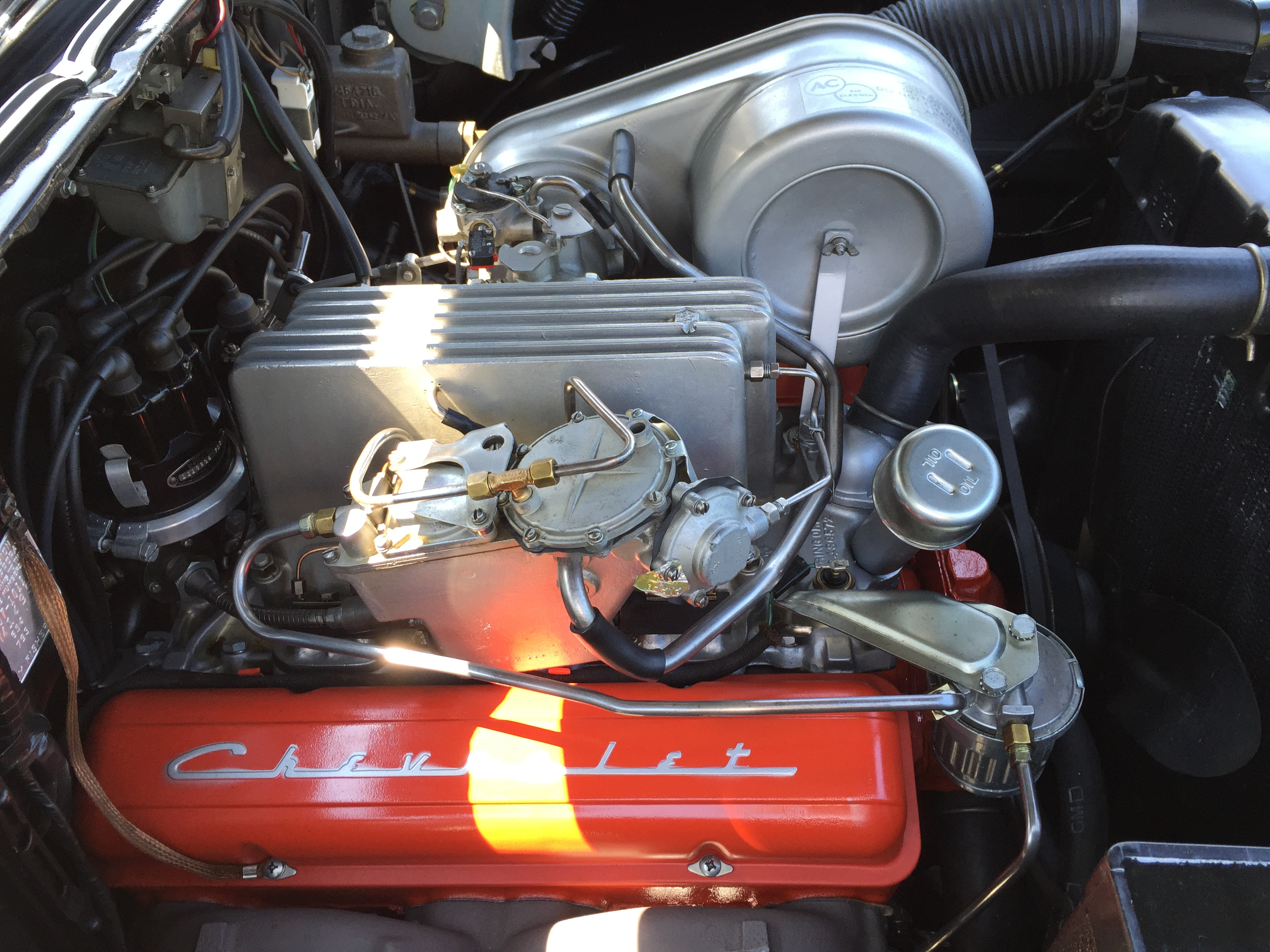
3. **1957 Corvette Fuel Injection: Precision Power Takes the Stage**Under the visionary guidance of Zora Arkus-Duntov, who was fast becoming the driving force behind Corvette development as chief engineer, Chevrolet’s two-seater truly came of performance age in the 1957 model year. This was largely due to a remarkable technological advancement: the addition of Rochester mechanical fuel injection. This wasn’t just a minor upgrade; it was a game-changer that elevated the Corvette’s engineering prowess to a whole new level, solidifying its reputation as a serious sports car.
Thanks to the incredibly precise fuel distribution offered by this new system, the 283-cubic-inch small-block V8 engine was able to achieve a then-astonishing 283 horsepower. This meant an incredible 1 horsepower per cubic inch – a metric that was unheard of in an era where most engines were often only half that efficient. It was a sophisticated system, a development of the injection technology fitted to John Fitch’s 1956 B-Class winner at Sebring, and it became instantly iconic, a symbol of American engineering muscle and ingenuity.
Chevrolet built 6,338 Corvettes for 1957, but of those, just 1,040 were equipped with the groundbreaking “Ramjet Fuel Injection” system, making them highly sought after. Road & Track magazine put a ’57 Corvette with fuel injection and a 4.11:1 rear gear set to the test, recording a blistering zero to 60 mph time of just 5.7 seconds. That’s a seriously impressive figure, even by today’s standards! This model truly helped shift the Corvette’s reputation from a stylish cruiser to a legitimate, compact rocket on wheels, a testament to its raw power and handling capabilities.
Car Model Information: 2004 Chevrolet Corvette Base
Name: Chevrolet Corvette
Caption: 2021 Chevrolet Corvette C8
Manufacturer: Chevrolet
Production: 1953–present
ModelYears: bulleted list
Assembly: bulleted list
Class: Sports car
BodyStyle: coupé
Layout: Front-engine, rear-wheel-drive layout,Rear mid-engine, rear-wheel-drive layout
Categories: 1950s cars, 1960s cars, 1970s cars, 1980s cars, 1990s cars
Summary: The Chevrolet Corvette is a line of American two-door, two-seater sports cars manufactured and marketed by General Motors under the Chevrolet marque since 1953. Throughout eight generations, indicated sequentially as C1 to C8, the Corvette is noted for its performance, distinctive styling, lightweight fiberglass or composite bodywork, and competitive pricing. The Corvette has had domestic mass-produced two-seater competitors fielded by American Motors, Ford, and Chrysler; it is the only one continuously produced by a United States auto manufacturer. It serves as Chevrolet’s halo car.
In 1953, GM executives accepted a suggestion by Myron Scott, then the assistant director of the Public Relations department, to name the company’s new sports car after the corvette, a small, maneuverable warship. Initially, a relatively modest, lightweight 6‑cylinder convertible, subsequent introductions of V8 engines, competitive chassis innovations, and rear mid-engined layout have gradually moved the Corvette upmarket into the supercar class. In 1963, the second generation was introduced in coupe and convertible styles. The first three Corvette generations (1953–1982) employed body-on-frame construction, and since the C4 generation, introduced in 1983 as an early 1984 model, Corvettes have used GM’s unibody Y‑body platform. All Corvettes used front mid-engine configuration for seven generations, through 2019, and transitioned to a rear mid-engined layout with the C8 generation.
Initially manufactured in Flint, Michigan, and St. Louis, Missouri, the Corvette has been produced in Bowling Green, Kentucky, since 1981, which is also the location of the National Corvette Museum. The Corvette has become widely known as “America’s Sports Car.” Automotive News wrote that after being featured in the early 1960s television show Route 66, “the Corvette became synonymous with freedom and adventure,” ultimately becoming both “the most successful concept car in history and the most popular sports car in history.”
Get more information about: Chevrolet Corvette
Buying a high-performing used car >>>
Brand: Chevrolet Model: Corvette
Price: $23,498 Mileage: 29,579 mi.

4. **1963 Corvette Sting Ray Split-Window Coupe: The Design Revolution**Get ready for a jaw-dropping transformation! A full half-century after its debut, the 1963 Corvette coupe remains one of the most alluring automotive designs ever conceived. This was a monumental leap from the C1, introducing a dramatic new aesthetic that would define an era. The 1963 Sting Ray is renowned for its iconic split rear window, a design feature so distinctive and beloved that it was a one-year-only design, making it an instant collector’s dream and arguably one of the most beautiful and iconic Corvettes ever.
It wasn’t just the looks that set this C2 generation apart from the original, solid-rear-axle C1. The chassis was entirely new, featuring an all-independent suspension incorporating transverse leaf springs. This innovative setup instantly made the Corvette competitive with sports cars from around the world, excelling in both comfort for daily use and formidable performance on the track. In particular, this new design and engineering prowess meant the Corvette was once again able to go head-to-head with rivals like Shelby’s new Cobras.
For 1963, the powerhouse under the hood was the highly developed, 360-horsepower “L84” 327-cubic-inch small-block V8, capped by Rochester mechanical fuel injection. Despite being the most powerful engine in the range that year, it was also surprisingly easygoing and flexible, offering a thrilling yet refined driving experience. If the buyer wanted to get the most out of that engine, he could opt for the Z06 option, which stiffened the suspension, tightened the ratios in the Muncie four-speed manual gearbox, beefed up stopping power with bigger drum brakes, added a huge 36.5-gallon fuel tank, and fitted a set of spectacular finned, cast aluminum, center knock-off wheels. This truly was a turning point for the Corvette, setting the standard for every subsequent model.
Car Model Information: 2021 Volkswagen Tiguan 2.0T SE R-Line Black
Name: Chevrolet Corvette (C2)
Caption: 1963 Chevrolet Corvette Sport Coupe
Manufacturer: Chevrolet
Aka: Chevrolet Corvette Sting Ray
Production: August 1962–July 1967
ModelYears: 1963–1967
Platform: Series 0800 (1962-1964),Series 194 (1965-1967)
Chassis: Body-on-frame
Assembly: St. Louis, Missouri
Predecessor: Chevrolet Corvette (C1)
Successor: Chevrolet Corvette (C3)
Class: Sports car
BodyStyle: Convertible (car),coupé
Layout: Front-engine, rear-wheel-drive layout
Engine: {{cvt,327,cuin,L,1,Chevrolet small-block engine#327,V8 engine
Wheelbase: cvt
Length: cvt
Width: cvt
Height: cvt
Weight: cvt
Transmission: manual transmission,manual transmission,Powerglide
Related: Bill Thomas Cheetah
Designer: Larry Shinoda
Categories: 1960s cars, All articles needing additional references, All articles with specifically marked weasel-worded phrases, All articles with unsourced statements, Articles needing additional references from July 2024
Summary: The Chevrolet Corvette (C2) is the second-generation Corvette sports car, produced by the Chevrolet division of General Motors (GM) for the 1963 through 1967 model years.
Get more information about: Chevrolet Corvette (C2)
Buying a high-performing used car >>>
Brand: Corvette Model: Sting Ray
Price: $16,773 Mileage: 68,625 mi.

5. **1965 Corvette Sting Ray Big Block: Unleashing the Beast**Just when you thought the Sting Ray couldn’t get any more thrilling, 1965 roared onto the scene, bringing with it a game-changing addition: the first-ever big-block V8 in a Corvette. This was the year the Corvette truly began to flex its raw, unadulterated muscle, setting the stage for the thunderous powerhouses that would define the late 60s and early 70s. The bulging hood scoop of the 1965 model wasn’t just for show; it hinted at the beast lurking beneath, a powerful statement of intent.
Under that distinctive hood, enthusiasts could opt for the potent 396-cubic-inch L78 engine, which pushed out a staggering 425 horsepower. This was an undeniable performance boost, transforming the Sting Ray into an even more formidable machine on the road and track. To handle this newfound power, the 1965 model also featured heavy-duty suspension and improved brakes, ensuring that drivers could harness the immense force responsibly.
But the innovations didn’t stop there! 1965 also saw the highly anticipated debut of four-wheel disc brakes. This was a significant performance enhancement, providing superior stopping power and control, further solidifying the Corvette’s reputation as a top-tier sports car. The combination of groundbreaking big-block power and advanced braking technology made the 1965 Sting Ray Big Block an instant classic, a pivotal model that truly unleashed the Corvette’s potential and paved the way for even larger 427s to come.
Car Model Information: 2021 Volkswagen Tiguan 2.0T SE R-Line Black
Name: Chevrolet Corvette (C2)
Caption: 1963 Chevrolet Corvette Sport Coupe
Manufacturer: Chevrolet
Aka: Chevrolet Corvette Sting Ray
Production: August 1962–July 1967
ModelYears: 1963–1967
Platform: Series 0800 (1962-1964),Series 194 (1965-1967)
Chassis: Body-on-frame
Assembly: St. Louis, Missouri
Predecessor: Chevrolet Corvette (C1)
Successor: Chevrolet Corvette (C3)
Class: Sports car
BodyStyle: Convertible (car),coupé
Layout: Front-engine, rear-wheel-drive layout
Engine: {{cvt,327,cuin,L,1,Chevrolet small-block engine#327,V8 engine
Wheelbase: cvt
Length: cvt
Width: cvt
Height: cvt
Weight: cvt
Transmission: manual transmission,manual transmission,Powerglide
Related: Bill Thomas Cheetah
Designer: Larry Shinoda
Categories: 1960s cars, All articles needing additional references, All articles with specifically marked weasel-worded phrases, All articles with unsourced statements, Articles needing additional references from July 2024
Summary: The Chevrolet Corvette (C2) is the second-generation Corvette sports car, produced by the Chevrolet division of General Motors (GM) for the 1963 through 1967 model years.
Get more information about: Chevrolet Corvette (C2)
Buying a high-performing used car >>>
Brand: Corvette Model: Sting Ray
Price: $16,773 Mileage: 68,625 mi.
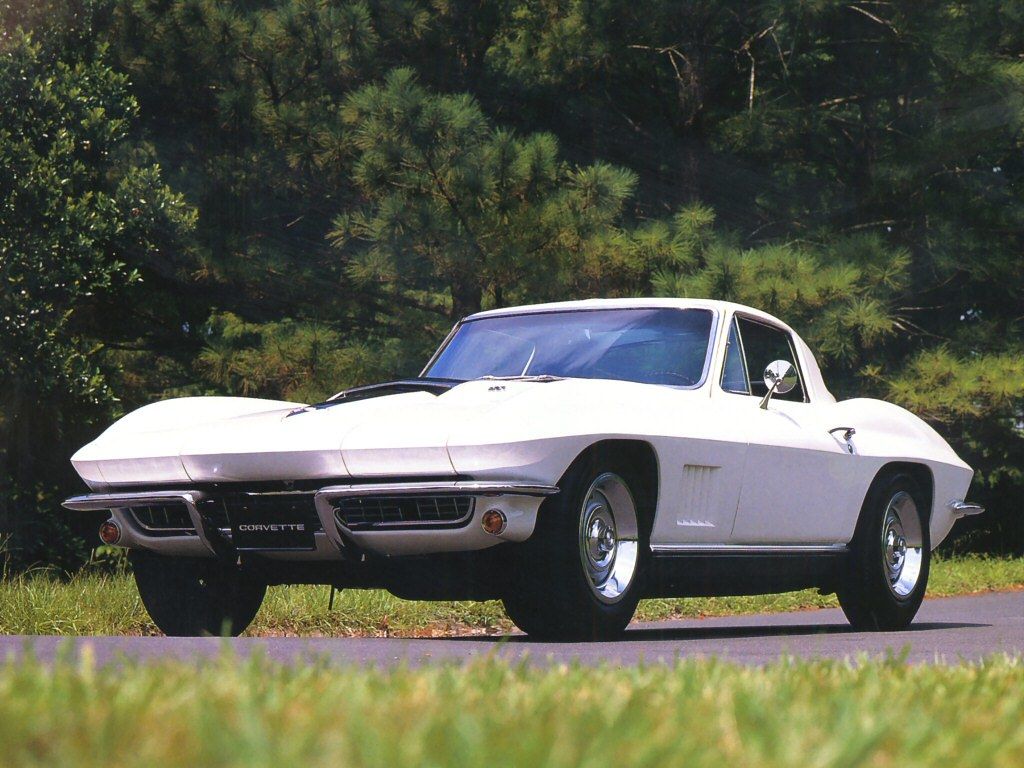
6. **1967 Corvette L88: The Untamed Legend**Prepare for an adrenaline rush because the 1967 Corvette L88 isn’t just a car; it’s a force of nature. Often referred to as the ultimate C2, this model was built for one purpose: to dominate. Stand next to an L88 Corvette when it starts, and you can practically feel the big Holley 850 carburetor fighting to pull the air out of your lungs. After a few moments, the engine settles into a vicious idle, and the heat coming from the exhaust begins to roast your nostrils. There have been faster Corvettes, but none more uncompromisingly aggressive.
Under its aggressively styled hood lay the legendary 427-cubic-inch big-block V8 engine, officially rated at 430 horsepower. However, this was widely considered a conservative figure, with most observers and enthusiasts estimating its true output to be closer to an astounding 550 horsepower or even more! This colossal power was achieved through an astonishing 12.5:1 compression ratio in the aluminum heads capping the iron 427-cubic-inch big-block V8. It was so potent that a warning label advised using fuel with a minimum of 103 research octane and 95 motor octane to prevent engine damage.
The L88 was a true race-ready supercar, and it came stripped of creature comforts to save weight and maximize performance. Forget about your favorite tunes or defrosting your windshield – this beast famously came without a radio or a heater/defroster, making its intentions unequivocally clear. Only 20 of these incredible machines were made in 1967, making it one of the rarest and most intensely sought-after Corvettes ever. Each one was equipped with the best General Motors had to offer in 1967, cementing its place as a powerful icon of American muscle and a legendary chapter in Corvette history.

7. **1970 Corvette LT-1: The Small-Block Marvel**Just when it seemed like the muscle car era was all about massive big-block engines, the 1970 Corvette LT-1 rolled onto the scene and showed everyone that a brilliantly balanced small-block could absolutely dominate. This wasn’t just another engine option; it was a statement, proving that raw power didn’t always need to come in the largest package. It quickly earned a reputation for being sweetly balanced, nicely detailed, and undeniably quick, holding its own even against the legendary 427- and 454-cubic-inch beasts. What a comeback for the little engine that could!
Under its hood roared a 370-horsepower, 350-cubic-inch small-block V8, featuring solid lifters, an 11.0:1 compression ratio, and a four-barrel carburetor. This setup was so potent that many enthusiasts and observers believed its official rating was a huge understatement, suggesting it was making closer to 400 horsepower! It was the kind of engine that made you grin from ear to ear every time you hit the gas, a testament to Chevrolet’s engineering prowess during a golden age of performance.
But why the conservative official rating? Well, with insurance rates for high-horsepower cars already on the rise, Chevrolet probably wasn’t keen on shouting too loudly about the LT-1’s true output. This clever move helped keep it just under the radar while still delivering incredible performance. However, the good times were somewhat short-lived, as impending emissions regulations and the shift to low-lead and unleaded gasoline saw its rating drop to 330 hp in 1971, and eventually to 255 hp by 1972, marking the end of its initial run.
Yet, the legacy of the LT-1 lived on, becoming a benchmark for small-block performance. In a cool nod to history, the LT1 name, albeit without the hyphen, made a triumphant return with the new-generation 2014 C7 Corvette, boasting a 6.2-liter engine and a projected 450-hp rating. It just goes to show that some legends are simply too good to stay in the past!
Car Model Information: 2021 Volkswagen Tiguan 2.0T SE R-Line Black
Name: LT-1
Caption: LT-1 air-cleaner decal
Manufacturer: General Motors
Production: 1970–1972
Configuration: Naturally aspirated
Head: Cast iron
Valvetrain: Overhead valve engine
Fueltype: Gasoline
Fuelsystem: Carburetor
Coolingsystem: Radiator (engine cooling)
Compression: 9.0:1, 11.0:1
Displacement: 350 cuin
Abbr: on
Bore: 4 in
Stroke: 3.48 in
Block: Cast iron
Power: convert
Torque: convert
Categories: Articles with short description, Chevrolet engines, Gasoline engines by model, Short description is different from Wikidata, V8 engines
Summary: The LT-1 is a Chevrolet small-block engine produced by the Chevrolet division of General Motors between 1970 and 1972. The engine was also available in an updated form in the nineties before the introduction of the LS series of motors. This updated form was predominantly used in performance applications. It was available exclusively in the Corvette and Camaro and was produced in relatively small quantities. It is regarded today as one of the greatest of the Chevrolet small-blocks, an engine that has been in production since 1955.
Get more information about: Chevrolet LT-1
Buying a high-performing used car >>>
Brand: Chevrolet Model: Corvette LT-1
Price: $16,773 Mileage: 68,625 mi.

8. **1978 Corvette Pace Car Edition: A Silver Anniversary Icon**Talk about making an entrance! The 1978 Corvette had a monumental year, not only marking its 25th anniversary but also being chosen as the official pace car for the legendary Indianapolis 500. To celebrate this incredible distinction, Chevrolet unleashed a special Pace Car Edition model that instantly became an icon. It wasn’t just a car; it was a moving celebration of Corvette’s enduring legacy and a testament to its status in American motorsport.
This special edition was an absolute head-turner, thanks to its distinctive black and silver two-tone paint scheme that screamed speed and sophistication. Adding to its allure were mirrored T-tops and unique special graphics, making it unmistakable on the road. From the moment it was unveiled, it was clear this wasn’t just any Corvette; it was a collector’s dream, coveted for its striking appearance and its direct connection to one of racing’s most famous events.
Underneath that commemorative livery, the 1978 Pace Car Edition featured a reliable 350ci V8 engine, offering solid performance that perfectly complemented its show-stopping looks. While it might not have been a track-dominating monster in the same vein as some of its predecessors, it certainly had enough grunt to make every drive exhilarating. The demand for this special model was so overwhelming that Chevrolet ended up building over 6,500 units, far exceeding initial expectations.
Its association with the famous race, coupled with its innovative design features and limited production as a special edition, made the 1978 Pace Car Edition a highly sought-after collectible almost overnight. It’s a prime example of how the Corvette, even in its more celebratory forms, can capture the imagination of enthusiasts and secure its place in automotive history as a truly iconic machine.
Car Model Information: 2004 Chevrolet Corvette Base
Name: Chevrolet Corvette
Caption: 2021 Chevrolet Corvette C8
Manufacturer: Chevrolet
Production: 1953–present
ModelYears: bulleted list
Assembly: bulleted list
Class: Sports car
BodyStyle: coupé
Layout: Front-engine, rear-wheel-drive layout,Rear mid-engine, rear-wheel-drive layout
Categories: 1950s cars, 1960s cars, 1970s cars, 1980s cars, 1990s cars
Summary: The Chevrolet Corvette is a line of American two-door, two-seater sports cars manufactured and marketed by General Motors under the Chevrolet marque since 1953. Throughout eight generations, indicated sequentially as C1 to C8, the Corvette is noted for its performance, distinctive styling, lightweight fiberglass or composite bodywork, and competitive pricing. The Corvette has had domestic mass-produced two-seater competitors fielded by American Motors, Ford, and Chrysler; it is the only one continuously produced by a United States auto manufacturer. It serves as Chevrolet’s halo car.
In 1953, GM executives accepted a suggestion by Myron Scott, then the assistant director of the Public Relations department, to name the company’s new sports car after the corvette, a small, maneuverable warship. Initially, a relatively modest, lightweight 6‑cylinder convertible, subsequent introductions of V8 engines, competitive chassis innovations, and rear mid-engined layout have gradually moved the Corvette upmarket into the supercar class. In 1963, the second generation was introduced in coupe and convertible styles. The first three Corvette generations (1953–1982) employed body-on-frame construction, and since the C4 generation, introduced in 1983 as an early 1984 model, Corvettes have used GM’s unibody Y‑body platform. All Corvettes used front mid-engine configuration for seven generations, through 2019, and transitioned to a rear mid-engined layout with the C8 generation.
Initially manufactured in Flint, Michigan, and St. Louis, Missouri, the Corvette has been produced in Bowling Green, Kentucky, since 1981, which is also the location of the National Corvette Museum. The Corvette has become widely known as “America’s Sports Car.” Automotive News wrote that after being featured in the early 1960s television show Route 66, “the Corvette became synonymous with freedom and adventure,” ultimately becoming both “the most successful concept car in history and the most popular sports car in history.”
Get more information about: Chevrolet Corvette
Buying a high-performing used car >>>
Brand: Chevrolet Model: Corvette
Price: $23,498 Mileage: 29,579 mi.
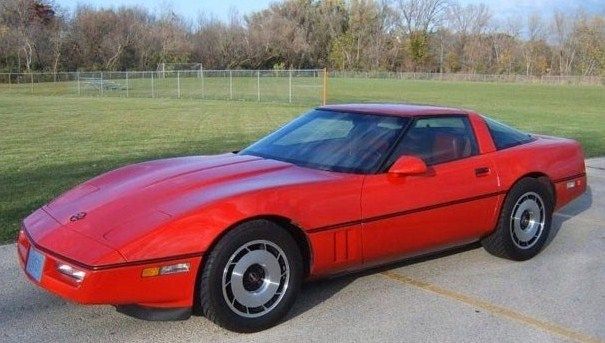
9. **1984 Corvette C4: The Resurgence of a Sports Car**By the early 1980s, some might say the Corvette had lost a bit of its edge. The C3 generation, which had been around since 1968, had grown increasingly soft over the years, morphing into more of a “boulevard cruiser” than a true sports car capable of competing with European rivals like Porsches and Ferraris. But then, in 1984, everything changed. The C4 generation burst onto the scene with a mission: to reclaim the Corvette’s rightful place as America’s premier performance machine.
The C4 was an absolute revelation, astonishing in its appearance and radically more capable than its predecessor. Gone were the soft curves of the C3, replaced by a sleek, knifelike profile that exuded aggression and modernity. A massive clamshell hood didn’t just cover the engine; it opened up to expose gorgeous cast-aluminum suspension links, a visual feast for any car enthusiast. The wheels were equally impressive, now a huge 16 inches in diameter and wrapped in high-performance Goodyear Gatorback directional rubber, giving it an undeniable presence.
Step inside, and you were greeted by an interior that felt almost spacey and futuristic, highlighted by a digital dashboard that lit up like a scene from an arcade game. While the initial “Cross-Fire Injection” version of the 5.7-liter small-block V8, making only 205 hp, and the rather crude Doug Nash “4+3” manual transmission, along with a brutally stiff suspension, held it back slightly in its debut year, these were minor hiccups in an otherwise revolutionary design.
Despite its initial minor flaws, the C4 was an instant winner, quickly proving its mettle by running away from some Porsches and dominating showroom stock racing. It wasn’t just a redesign; it was a complete reinvention that firmly re-established the Corvette as a real, serious sports car. This generation reset expectations and proved that America’s sports car was back and better than ever, ready to take on the world.

10. **1990 Corvette ZR-1: The King of the Hill**Prepare to bow down, because the 1990 Corvette ZR-1 wasn’t just a car; it was a technological marvel that earned its legendary nickname: “King of the Hill.” This was the moment the Corvette truly went high-tech, showcasing what was possible when American muscle met cutting-edge engineering from across the pond. It was a major leap forward, pushing the boundaries of performance and setting a new benchmark for the brand.
Underneath its distinctive clamshell hood, the ZR-1 housed the truly revolutionary, Lotus-designed, Mercury Marine-built LT5 V8 engine. This wasn’t your average small-block; it was a dual overhead cam (DOHC), 32-valve masterpiece initially producing 375 horsepower, later boosted to 405 hp in subsequent models. It stands unique in Corvette history as the only factory model not powered by an overhead-valve engine, making it a truly special beast that roared to life with an exhilarating fury.
And talk about performance! This wide-hipped wonder, with its unique taillights, could unleash a torrent of power, effortlessly breaking the traction of its P315/35ZR17 rear Goodyear Eagle GS-Cs tires at 70 mph in fourth gear, leaving a blue-gray haze in its wake. It sprinted from zero to 60 mph in just 4.9 seconds and devoured the quarter-mile in a blistering 13.0 seconds at over 117 mph. But the LT5’s real forte was its incredible midrange punch, rocketing from 60 to 100 mph in a mere 4.8 seconds – astonishing numbers for the 1990s.
While subsequent C5 and C6 Corvettes eventually chased down and surpassed the old ZR-1’s raw numbers, that doesn’t diminish the colossal achievement it represented. The 1990 ZR-1 wasn’t just fast; it was a statement, a bold declaration that the Corvette was back among the world’s elite sports cars, setting a legacy of performance that continues to inspire. It remains a cherished icon, a testament to pushing boundaries and redefining what a Corvette could be.
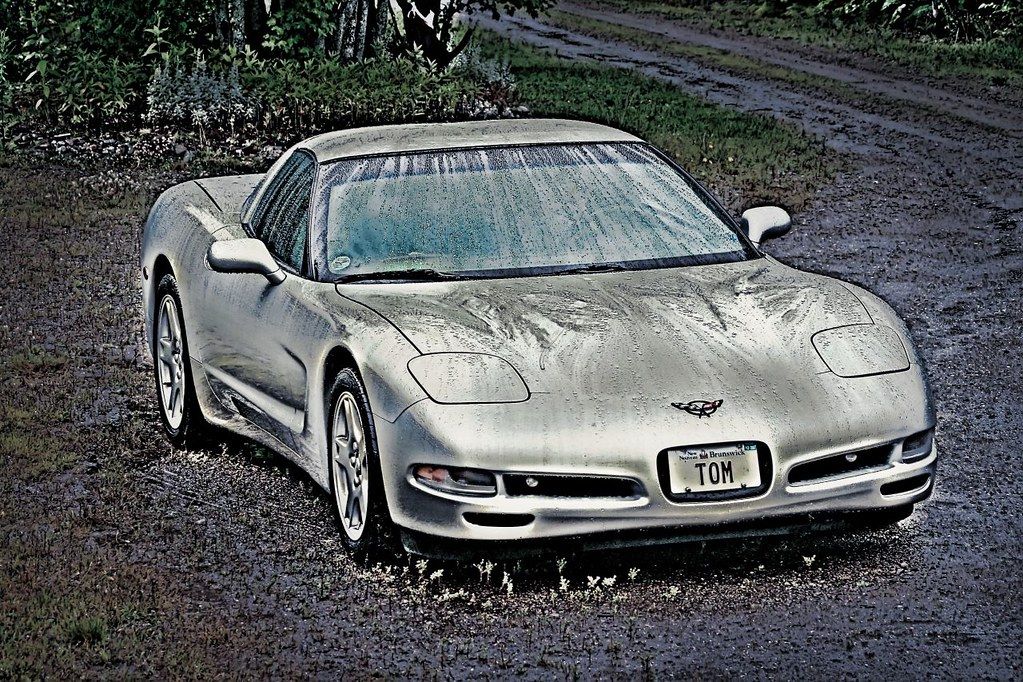
11. **1997 Corvette C5: Performance Meets Comfort**After years of evolving, the 1997 Corvette C5 arrived, marking a pivotal moment where Chevrolet finally delivered a Corvette that perfectly blended exhilarating performance with genuine touring comfort. This wasn’t just about speed; it was about creating a sophisticated machine that felt as much at home cruising effortlessly across the country as it did dicing for position on a challenging racetrack. It truly brought a new level of versatility to the Corvette nameplate.
The secret to the C5’s uncanny balance was a stroke of engineering genius: its entire structure was built around an all-new backbone frame. This innovative design strategically positioned the transmission between the rear wheels, a move that cleverly offset the engine’s mass up front. The result? A remarkably improved weight distribution that enhanced both handling dynamics and ride quality, giving drivers an unprecedented sense of control and refinement.
Adding to the C5’s formidable advantage was the brilliant, all-new LS1 5.7-liter V8 engine. This powerhouse was a game-changer, being the first all-aluminum V8 used in a volume production Corvette and GM’s first entirely new small-block since the legendary 1955 original. The LS1 unleashed 345 horsepower and delivered a seamless ribbon of torque, making every acceleration smooth and powerful. With the four-speed automatic, it hit zero to 60 mph in just over 5 seconds, a time that dropped to under 5 seconds with the six-speed manual.
The C5 generation redefined expectations for the Corvette, proving that a high-performance sports car could also be a comfortable and capable grand tourer. It set a new standard for blending aggressive capability with everyday usability, making it a beloved model among enthusiasts who wanted to enjoy their Corvette wherever the road might take them.
Car Model Information: 2021 Volkswagen Tiguan 2.0T SE R-Line Black
Name: Chevrolet Corvette (C5)
Manufacturer: Chevrolet
Production: October 1, 1996 – July 2, 2004
ModelYears: 1997–2004
Assembly: Bowling Green, Kentucky
Designer: John Cafaro (1993)
Predecessor: Chevrolet Corvette (C4)
Successor: Chevrolet Corvette (C6)
Class: Sports car
BodyStyle: coupé,Convertible (car),hardtop
Layout: Front-engine, rear-wheel-drive layout#FMR
Platform: GM Y platform
Engine: General Motors LS-based small-block engine#LS1,General Motors LS-based small-block engine#LS6
Transmission: Manual transmission,Automatic transmission
Wheelbase: cvt
Length: cvt
Width: cvt
Height: {{cvt,47.7,in,mm,0
Weight: {{cvt,1472,kg,lb,0
Related: Callaway C12
Categories: 2000s cars, All articles with unsourced statements, Articles with short description, Articles with unsourced statements from August 2024, Articles with unsourced statements from March 2019
Summary: The Chevrolet Corvette (C5) is the fifth generation of the Corvette sports car, produced by the Chevrolet division of General Motors for the 1997 through 2004 model years. Production variants include the high performance Z06. Racing variants include the C5-R, a 24 Hours of Daytona and 24 Hours of Le Mans GTS/GT1 winner. The C5 Corvette was the first GM vehicle to feature the third generation small block “LS” engines. This was the last generation Corvette with Pop-up headlights.
Get more information about: Chevrolet Corvette (C5)
Buying a high-performing used car >>>
Brand: Chevrolet Model: Corvette C5
Price: $16,773 Mileage: 68,625 mi.
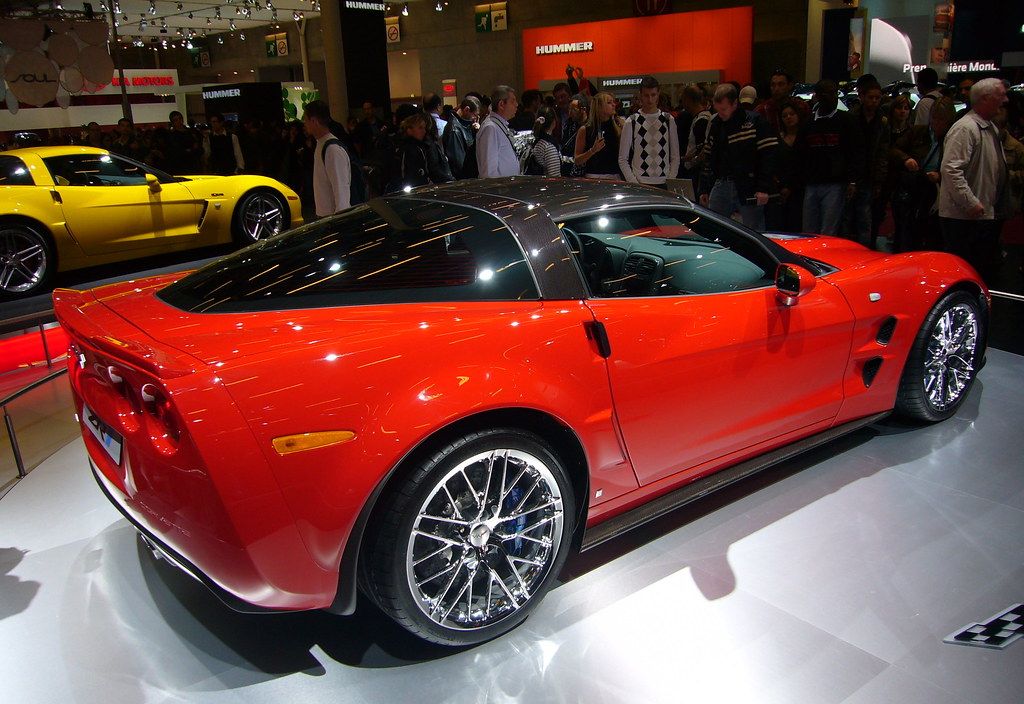
12. **2009 Corvette ZR1: The Ultimate Apex Predator**If you thought the Corvette couldn’t get any more extreme, think again! The 2009 Corvette ZR1 arrived as an absolute force of nature, a model whose numbers were simply overwhelming and left no doubt about its status as an apex predator on wheels. This was the pinnacle of Corvette performance for its era, a supercharged beast designed to dominate every road and track it touched.
Under its hood lay a supercharged 6.2-liter version of the renowned LS-series V8, officially rated at an astonishing 638 horsepower. These numbers translated into mind-bending performance: this Corvette coupe rocketed to 60 mph in a mere 3.5 seconds and obliterated the quarter-mile in a blistering 11.5 seconds at 128.3 mph. With a top speed soaring beyond 200 mph and massive tires allowing it to stick on a skid pad beyond the force of gravity, it truly pushed the boundaries of what a production car could achieve.
But here’s the kicker: despite all that insane performance ability, the 2009 ZR1 was also among the most civilized Corvettes ever built. It wasn’t just a one-trick pony; it was a car that could effortlessly serve as a regular commuter during the week, offering surprising comfort and refinement, before transforming into a track weapon for setting low lap times at any road course in the world on the weekends. This duality was a remarkable feat of engineering.
Even as the ZR1 was leaving production just as 2013 began, its legend was already firmly established. It continued to win comparison tests and burn down tires with the ferocity befitting its reputation. The 2009 ZR1 remains etched in automotive history as the fastest, most capable Corvette ever built at the time, a testament to relentless innovation and the insatiable pursuit of ultimate performance.
Car Model Information: 2004 Chevrolet Corvette Base
Name: Chevrolet Corvette
Caption: 2021 Chevrolet Corvette C8
Manufacturer: Chevrolet
Production: 1953–present
ModelYears: bulleted list
Assembly: bulleted list
Class: Sports car
BodyStyle: coupé
Layout: Front-engine, rear-wheel-drive layout,Rear mid-engine, rear-wheel-drive layout
Categories: 1950s cars, 1960s cars, 1970s cars, 1980s cars, 1990s cars
Summary: The Chevrolet Corvette is a line of American two-door, two-seater sports cars manufactured and marketed by General Motors under the Chevrolet marque since 1953. Throughout eight generations, indicated sequentially as C1 to C8, the Corvette is noted for its performance, distinctive styling, lightweight fiberglass or composite bodywork, and competitive pricing. The Corvette has had domestic mass-produced two-seater competitors fielded by American Motors, Ford, and Chrysler; it is the only one continuously produced by a United States auto manufacturer. It serves as Chevrolet’s halo car.
In 1953, GM executives accepted a suggestion by Myron Scott, then the assistant director of the Public Relations department, to name the company’s new sports car after the corvette, a small, maneuverable warship. Initially, a relatively modest, lightweight 6‑cylinder convertible, subsequent introductions of V8 engines, competitive chassis innovations, and rear mid-engined layout have gradually moved the Corvette upmarket into the supercar class. In 1963, the second generation was introduced in coupe and convertible styles. The first three Corvette generations (1953–1982) employed body-on-frame construction, and since the C4 generation, introduced in 1983 as an early 1984 model, Corvettes have used GM’s unibody Y‑body platform. All Corvettes used front mid-engine configuration for seven generations, through 2019, and transitioned to a rear mid-engined layout with the C8 generation.
Initially manufactured in Flint, Michigan, and St. Louis, Missouri, the Corvette has been produced in Bowling Green, Kentucky, since 1981, which is also the location of the National Corvette Museum. The Corvette has become widely known as “America’s Sports Car.” Automotive News wrote that after being featured in the early 1960s television show Route 66, “the Corvette became synonymous with freedom and adventure,” ultimately becoming both “the most successful concept car in history and the most popular sports car in history.”
Get more information about: Chevrolet Corvette
Buying a high-performing used car >>>
Brand: Chevrolet Model: Corvette
Price: $23,498 Mileage: 29,579 mi.
And there you have it, fellow car fanatics! From its revolutionary fiberglass birth in 1953 to the supercharged track beasts of the 21st century, the Chevrolet Corvette has never stopped pushing boundaries. Each of these iconic models, whether an early trailblazer or a modern marvel, contributes to a legacy that transcends mere automotive engineering. They are symbols of American ingenuity, passion, and the unwavering dream of raw power and undeniable style. So, next time you see a ‘Vette, remember the incredible journey it represents – a true icon that continues to captivate hearts and minds across generations. What a ride it’s been, and we can only imagine what thrilling chapters are yet to come for this enduring legend!


